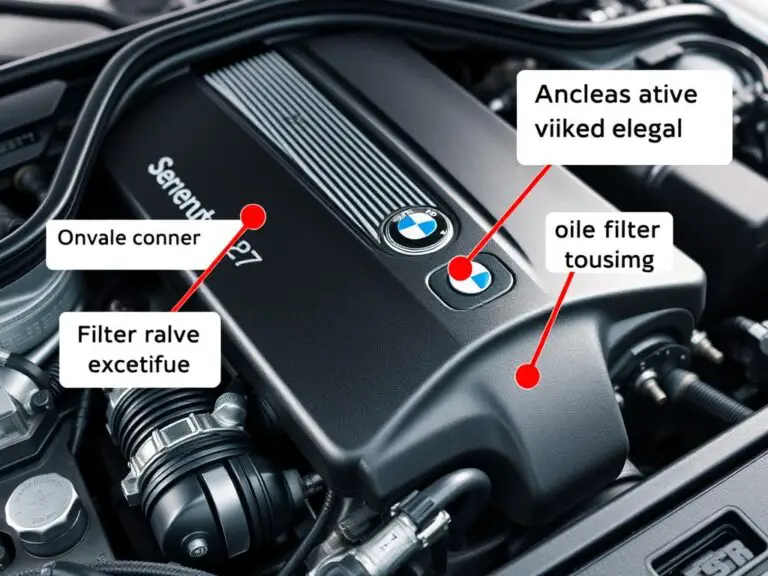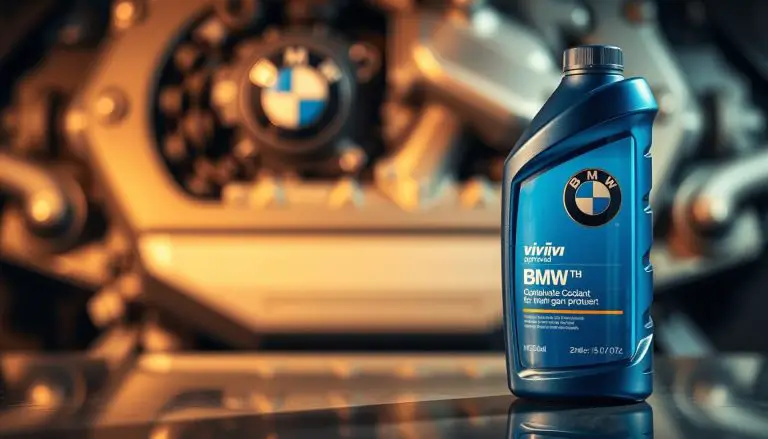A properly functioning heating system is crucial for a comfortable driving experience, especially during the cold winter months. If your BMW’s heater is malfunctioning, it can be a significant inconvenience. Understanding the common issues and knowing how to troubleshoot them can help you identify and potentially fix the problem.
Troubleshooting a malfunctioning BMW heater involves checking various components, including the thermostat, heater core, and electrical systems. In this article, we will guide you through the process of diagnosing and fixing common BMW heating issues, ensuring your vehicle’s heating system is working efficiently.
Key Takeaways
- Common causes of BMW heater malfunction
- Step-by-step guide to troubleshooting BMW heating issues
- Tips for maintaining your BMW’s heating system
- When to seek professional help for heater repairs
- Importance of regular maintenance for optimal heater performance
The Importance of a Properly Functioning BMW Heating System
The BMW heating system plays a vital role in ensuring a comfortable and safe driving experience, especially in harsh winter conditions. A properly functioning heating system is essential for defrosting windows, maintaining cabin temperature, and ensuring the overall comfort of the driver and passengers.
How BMW Heating Systems Differ from Other Vehicles
BMW heating systems are designed with advanced technology and precision engineering, distinguishing them from other vehicles. They are integrated with the car’s climate control system, allowing for precise temperature management. This advanced integration enables a more efficient and responsive heating performance, tailored to the specific needs of the vehicle’s occupants.
Safety and Comfort Implications of Heater Failures
A malfunctioning heater can lead to significant safety and comfort issues. For instance, a failure to defrost windows can impair visibility, posing a risk to safe driving. “A faulty heating system not only compromises comfort but also jeopardizes safety on the road.” Furthermore, prolonged exposure to cold temperatures inside the vehicle can lead to driver fatigue and decreased concentration.
Therefore, maintaining a properly functioning BMW heating system is crucial for both safety and comfort. Regular checks and timely repairs can prevent heater failures and ensure a pleasant driving experience.
Understanding Your BMW’s Heating System Components
Understanding the intricacies of your BMW’s heating system is crucial for identifying and fixing heater-related issues. The heating system is a complex assembly of parts that work together to warm the cabin.
Key Components: Heater Core, Blower Motor, and Control Module
The heater core, blower motor, and control module are vital components of the BMW heating system. The heater core acts as a mini radiator, transferring heat from the coolant to the cabin air. The blower motor circulates the warm air throughout the vehicle. The control module regulates the heating system, ensuring the desired temperature is maintained.
How the BMW Heating Circuit Operates
The BMW heating circuit operates by circulating warm coolant through the heater core. As the blower motor pushes air through the core, the air is warmed and distributed throughout the cabin.
Differences Between BMW Series (3-Series, 5-Series, X Models)
Different BMW series, such as the 3-Series, 5-Series, and X models, may have variations in their heating systems. For instance, some models may have additional features like dual-zone climate control, affecting how the heating system operates.
BMW Heater Not Working (Causes, Reasons and Solutions)
A malfunctioning BMW heater can be attributed to several factors, ranging from simple issues to complex system failures. Understanding these causes is crucial for effective troubleshooting and repair.
Low Coolant Levels and Leakage Issues
One of the most common reasons for a BMW heater not working is low coolant levels or leakage issues within the cooling system. Coolant leaks can lead to inadequate heating performance. Checking the coolant level and inspecting the system for leaks is a crucial first step in diagnosing heater issues.
If you find a leak, it’s essential to repair it promptly to prevent further damage to your BMW’s engine and heating system.
Faulty Water Pumps and Thermostats
Faulty water pumps and thermostats are other common causes of heater malfunction. The water pump circulates coolant through the engine and heater core, while the thermostat regulates engine temperature. Failure in either component can lead to inadequate heating.
Replacing a faulty water pump or thermostat requires careful consideration and should be done by someone familiar with BMW repair procedures.
Electrical Problems: Blower Motor and Control Module Failures
Electrical issues, such as a failing blower motor or control module, can also cause the BMW heater to stop working. The blower motor is responsible for circulating warm air, while the control module manages the heating system’s operations.
Diagnosing electrical problems may require specialized tools and knowledge of BMW’s electrical systems.
Clogged Heater Cores and Hoses
Clogged heater cores and hoses can restrict coolant flow, leading to poor heating performance. Flushing or replacing these components can often resolve the issue.

By addressing these common causes, BMW owners can often restore their heater’s function and enjoy a warmer, more comfortable driving experience.
Step-by-Step Diagnosis of Your BMW’s Heater Problem
A step-by-step diagnosis is crucial for resolving BMW heater issues efficiently. This process involves several key steps that help identify and potentially fix the problem.
Performing a Visual Inspection of the Heating System
Begin by conducting a thorough visual inspection of your BMW’s heating system. Check for any signs of leakage, damage, or wear on components such as hoses, the heater core, and the blower motor. Ensure all connections are secure and not corroded.
- Inspect the coolant level and condition.
- Look for leaks in the heater hoses and core.
- Check the electrical connections to the blower motor and control module.
Testing Airflow and Temperature Output
Next, test the airflow and temperature output from the vents. This step helps determine if the issue lies with the heating system’s ability to produce warm air or if it’s a problem with air distribution.
- Turn on the heater to its maximum setting.
- Check the airflow from different vents to ensure it’s consistent.
- Verify that the air temperature is as expected (hot or cold as selected).
Using OBD-II Scanners for Error Code Identification
For modern BMWs, using an OBD-II scanner can be invaluable. These scanners can retrieve error codes stored in the vehicle’s onboard computer, providing clues about the heater’s malfunction. For more complex issues, like those related to the O2 sensor heater circuit, you can find detailed information on sites like AutoMotivSimple.

By following these steps, you can systematically diagnose and potentially resolve BMW heater troubleshooting issues, ensuring your vehicle’s heating system operates effectively.
DIY Repairs for Common BMW Heater Issues
A malfunctioning BMW heater can be a significant inconvenience, especially during cold weather, but DIY repairs can be a cost-effective solution. Many common issues can be diagnosed and fixed at home with the right tools and knowledge.
Refilling and Bleeding the Cooling System
One common cause of BMW heater problems is low coolant levels or airlocks in the cooling system. To fix this, you’ll need to refill the coolant and bleed the system to remove any air pockets. Ensure you use the correct type of coolant recommended for your BMW model.
- Locate the coolant reservoir and check the level against the minimum and maximum marks.
- If the level is low, refill with the appropriate coolant.
- Bleed the cooling system according to your BMW’s repair manual instructions.
Replacing a Faulty Thermostat or Water Pump
A faulty thermostat or water pump can cause the heater to malfunction. The thermostat regulates engine temperature, while the water pump circulates coolant. If either component fails, it can lead to heater issues.
To replace these components, follow these steps:
- Purchase a replacement thermostat or water pump compatible with your BMW model.
- Follow the repair manual for instructions on how to replace the faulty component.
- Bleed the cooling system after replacement to ensure proper circulation.
Cleaning or Replacing the Heater Core
The heater core can become clogged over time, reducing its efficiency. Cleaning or replacing the heater core can resolve this issue. To clean it, you can use a mixture of water and a cleaning solution to flush out debris.
If cleaning doesn’t work, consider replacing the heater core. This involves:
- Disconnecting the heater hoses.
- Removing the heater core from its housing.
- Installing a new heater core and reconnecting the hoses.
Fixing Blower Motor and Electrical Problems
Electrical issues, such as a faulty blower motor or control module, can also cause heater problems. Check the blower motor fuse and wiring for any signs of damage or wear.
To fix or replace the blower motor:
- Check the blower motor fuse; replace it if blown.
- Inspect the wiring for any damage; repair or replace as needed.
- If the blower motor is faulty, replace it with a new one compatible with your BMW.
When to Seek Professional BMW Heater Service
Understanding when to seek professional help for your BMW’s heater issues can save time and money. While DIY repairs can be cost-effective, some problems require specialized equipment and expertise.
Complex Issues Requiring Specialized Equipment
Certain issues with your BMW’s heating system, such as faulty control modules or complex electrical problems, may require specialized diagnostic equipment. Professional mechanics have the tools and knowledge to diagnose and repair these complex issues efficiently.
Comparing Dealer vs. Independent Shop Repairs
When deciding where to take your BMW for heater repairs, you have the option of going to a dealership or an independent shop. Dealerships offer specialized knowledge and genuine parts, but at a higher cost. Independent shops may provide more competitive pricing but ensure they have experience with BMW repairs.
Typical Costs for Professional BMW Heater Repairs
The cost of professional BMW heater repairs can vary widely depending on the nature of the issue. On average, you can expect to pay between $200 to $500 for parts and labor. It’s essential to get a detailed estimate before proceeding with repairs.
Conclusion
A properly functioning heating system is crucial for comfort and safety in your BMW. By understanding the components and operation of your BMW’s heating system, you can identify and fix common issues. The BMW community forums provide valuable insights into troubleshooting and repairing heater problems.
Key steps in BMW heater troubleshooting include checking coolant levels, inspecting the heater core, and diagnosing electrical issues. The heat pump operates efficiently down to -10 °C / 14 °F, and the auxiliary flow heater provides additional heat when needed. By following the DIY repairs and maintenance tips outlined in this guide, you can resolve many common BMW heater not working issues.
For complex problems, seeking professional BMW heater service is recommended. Understanding when to seek help and how to choose between dealer and independent shop repairs can save time and money. By staying informed and proactive, you can ensure your BMW’s heating system operates reliably and efficiently.
FAQ
What are the common causes of a malfunctioning BMW heater?
Common causes include low coolant levels, faulty water pumps, electrical problems, and clogged heater cores.
How do I diagnose a heater problem in my BMW?
Diagnosis involves performing a visual inspection, testing airflow and temperature output, and using OBD-II scanners to identify error codes.
Can I fix a BMW heater issue on my own?
Yes, some issues can be fixed through DIY repairs, such as refilling the cooling system, replacing faulty thermostats or water pumps, and cleaning or replacing the heater core.
When should I seek professional help for my BMW heater issue?
Seek professional help for complex issues requiring specialized equipment, or if you’re unsure about the diagnosis or repair.
What is the difference between a dealership and an independent shop for BMW heater repairs?
Dealerships typically have specialized equipment and factory-trained technicians, while independent shops may offer more competitive pricing and personalized service.
How much does it cost to repair a BMW heater?
Costs vary depending on the issue, with prices ranging from a few hundred to several thousand dollars, depending on the complexity of the repair.
How often should I check my BMW’s coolant level?
Check your coolant level regularly, ideally every time you fill up with gas or during routine maintenance checks.
Can a faulty thermostat cause my BMW heater to malfunction?
Yes, a faulty thermostat can prevent your BMW’s heater from working properly, as it regulates engine temperature and coolant flow.


